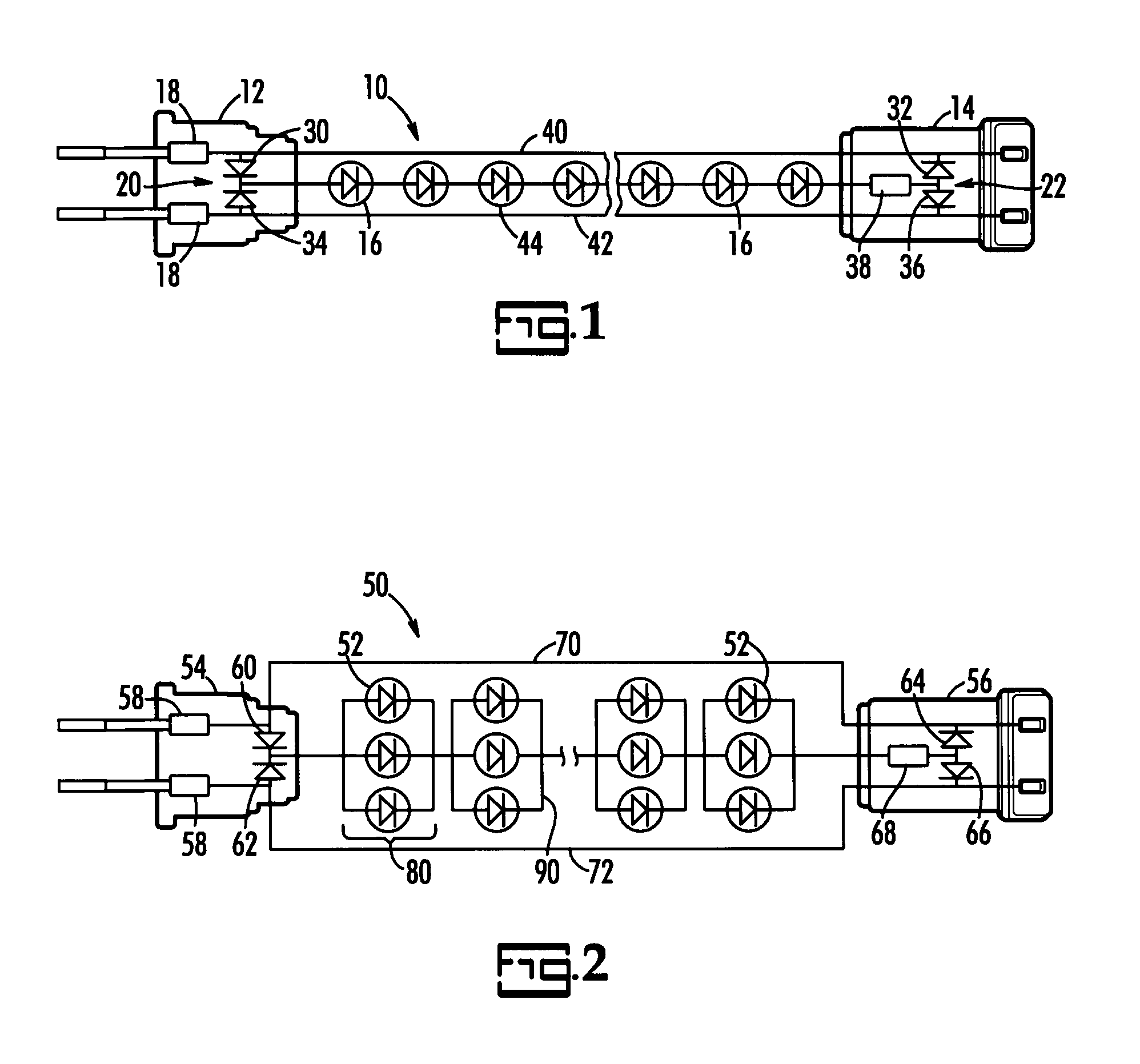LED light string with split bridge rectifier and thermistor fuse
a technology of rectifier and thermistor fuse, which is applied in the field of strings of lights, can solve the problems of easy burns, decorated, and shorted led heat up enough to become a fire hazard,
- Summary
- Abstract
- Description
- Claims
- Application Information
AI Technical Summary
Benefits of technology
Problems solved by technology
Method used
Image
Examples
Embodiment Construction
[0017]The present invention is a light string, such as might be used for holiday decorating. The present light string preferably uses plural light-emitting diodes (LEDs) rather than incandescent lights with the LEDs arranged in an electrical series with each other. A negative temperature coefficient (NTC) thermistor is placed in series with the LEDs. Alternatively, LEDs, as will be further described below, are arranged in groups of two or more electrically parallel LEDs are arranged electrically in series with each other group and with an NTC thermistor. Most preferably, when this series / parallel arrangement is used, a device is also placed in parallel with each group to regulate voltage in the event any of the LEDs in that group burn out or are lost, as described in U.S. Pat. No. 6,367,957, which is incorporated herein in its entirety.
[0018]Referring now to FIG. 1, at one end of a light string 10 is a plug 12 adapted for connecting to a source of alternating electrical current (AC)...
PUM
 Login to View More
Login to View More Abstract
Description
Claims
Application Information
 Login to View More
Login to View More - R&D
- Intellectual Property
- Life Sciences
- Materials
- Tech Scout
- Unparalleled Data Quality
- Higher Quality Content
- 60% Fewer Hallucinations
Browse by: Latest US Patents, China's latest patents, Technical Efficacy Thesaurus, Application Domain, Technology Topic, Popular Technical Reports.
© 2025 PatSnap. All rights reserved.Legal|Privacy policy|Modern Slavery Act Transparency Statement|Sitemap|About US| Contact US: help@patsnap.com


